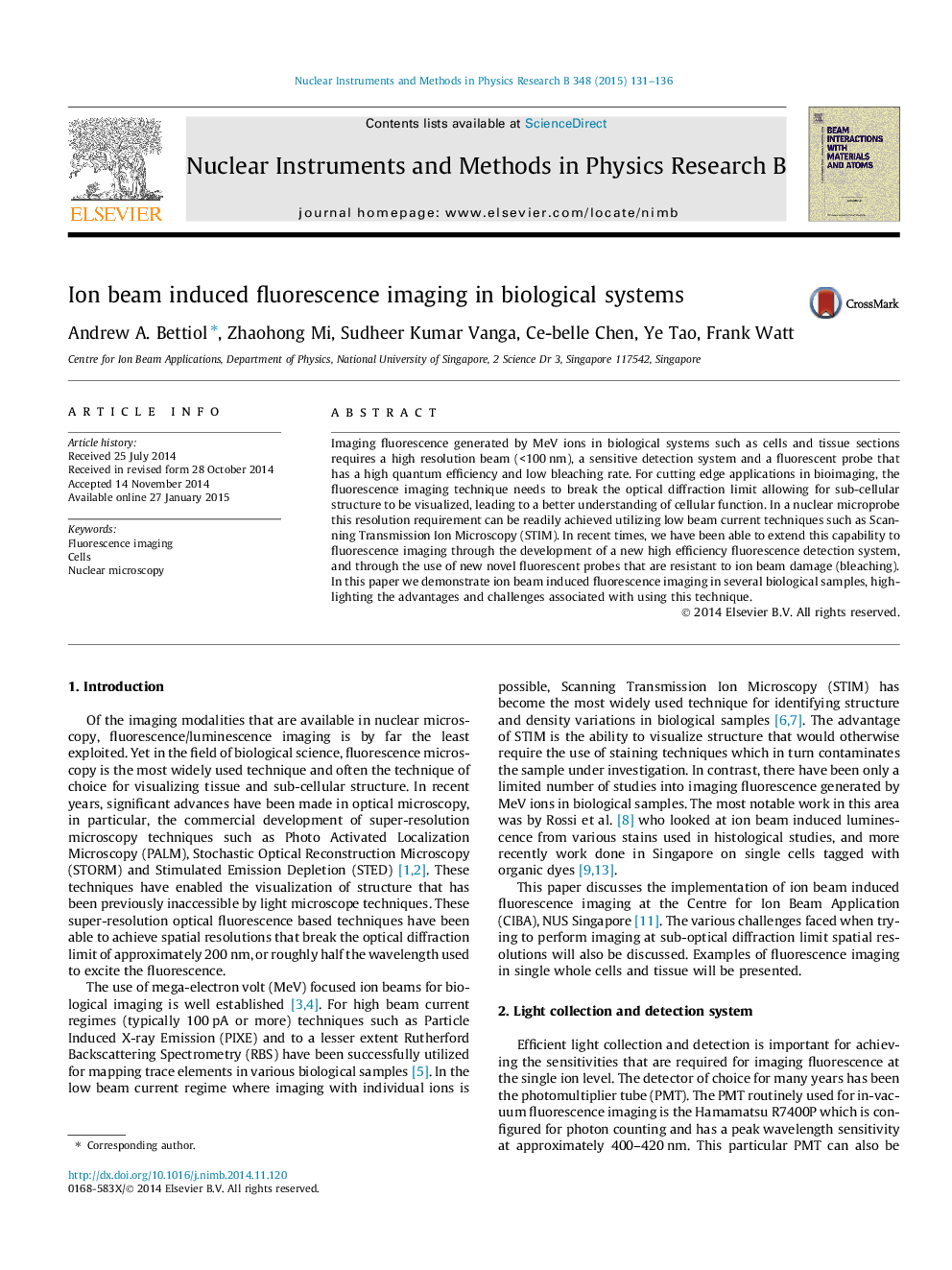| Article ID | Journal | Published Year | Pages | File Type |
|---|---|---|---|---|
| 1680361 | Nuclear Instruments and Methods in Physics Research Section B: Beam Interactions with Materials and Atoms | 2015 | 6 Pages |
Imaging fluorescence generated by MeV ions in biological systems such as cells and tissue sections requires a high resolution beam (<100 nm), a sensitive detection system and a fluorescent probe that has a high quantum efficiency and low bleaching rate. For cutting edge applications in bioimaging, the fluorescence imaging technique needs to break the optical diffraction limit allowing for sub-cellular structure to be visualized, leading to a better understanding of cellular function. In a nuclear microprobe this resolution requirement can be readily achieved utilizing low beam current techniques such as Scanning Transmission Ion Microscopy (STIM). In recent times, we have been able to extend this capability to fluorescence imaging through the development of a new high efficiency fluorescence detection system, and through the use of new novel fluorescent probes that are resistant to ion beam damage (bleaching). In this paper we demonstrate ion beam induced fluorescence imaging in several biological samples, highlighting the advantages and challenges associated with using this technique.
